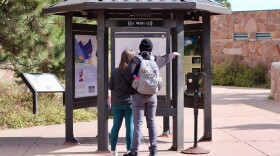-
Yellowstone National Park’s wolves have been contentious ever since they were reintroduced in 1995. Within the park, the roughly 100 canines are protected from hunting and trapping, and are a massive draw for tourists. But once they leave, those protections vanish, and the few wolves that venture out often die, quickly.
-
During the lapse in federal funding, Utah and Colorado, along with several nonprofit partner organizations, stepped in to keep key visitor services running.
-
The Trump Administration is using revenue from recreation fees to keep bathrooms clean and trash tidy at national parks during the shutdown. But parks are not charging fees at this time.
-
The Great Outdoors Fund helps to fill funding gaps for public lands projects by leveraging private investment.
-
The National Park Service said most roads and trails are open, but most buildings are closed. Some are confused about what they’ll find when they arrive at any given park site.
-
It wasn’t a typical fall day at one of the most popular national parks in the country. The night before, the federal government shut down, leaving fewer workers on the job. Yet the Trump Administration decided that national parks should largely remain open, nonetheless.
-
The Jackson Hole Chamber of Commerce is encouraging visitors to prepare for reduced services.
-
Park road and trails will mostly be open to visitors, but buildings and sites that can lock during non-business hours will stay inaccessible.
-
The Senate appropriations bill could also lift a hiring freeze and prevent future land sell-offs.
-
Handing over some sites that cater to mostly local visitors could cut the agency’s budget by 25%.
© 2025 Wyoming Public Media
800-729-5897 | 307-766-4240
Wyoming Public Media is a service of the University of Wyoming
800-729-5897 | 307-766-4240
Wyoming Public Media is a service of the University of Wyoming

Play Live Radio
Next Up:
0:00
0:00
Available On Air Stations











